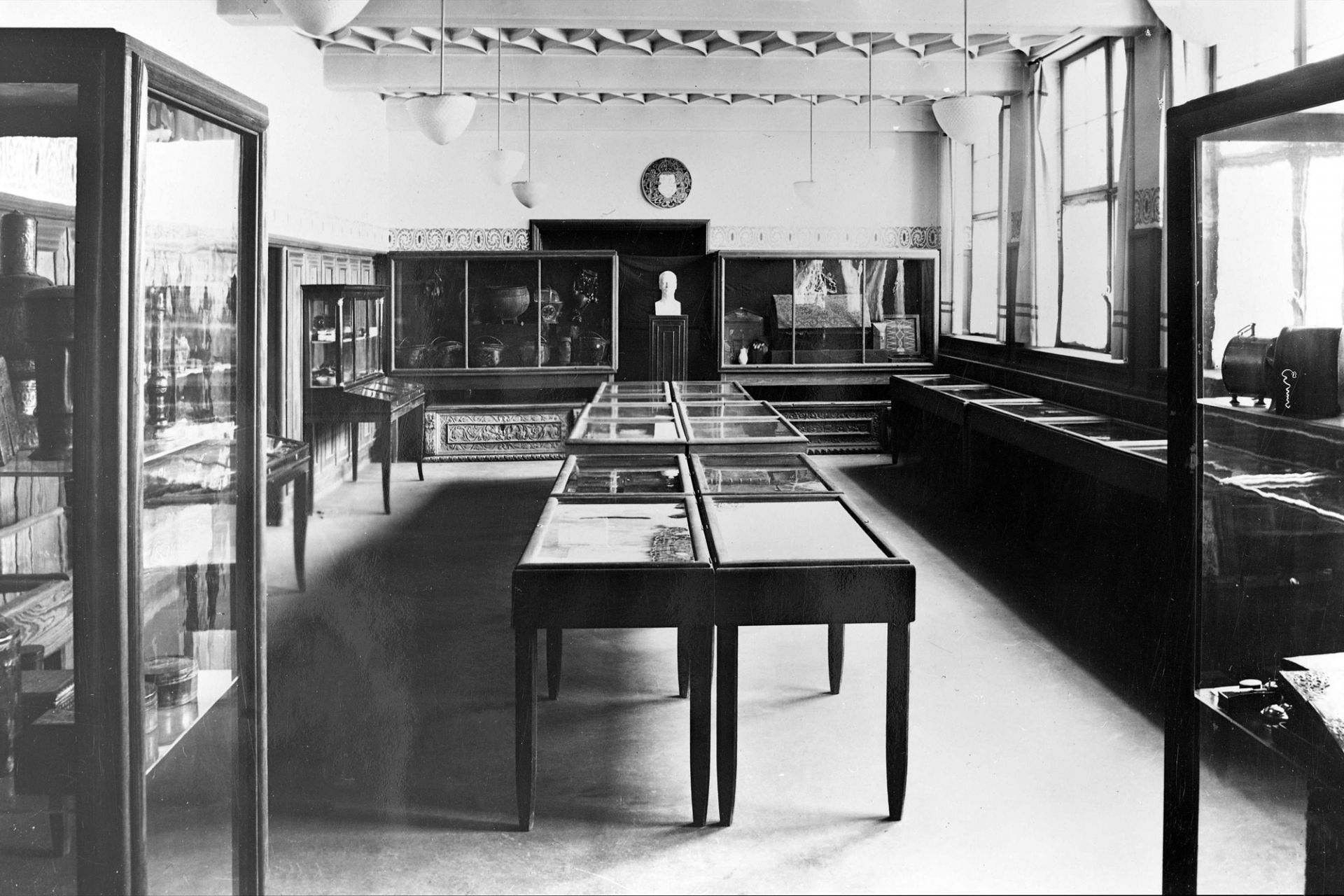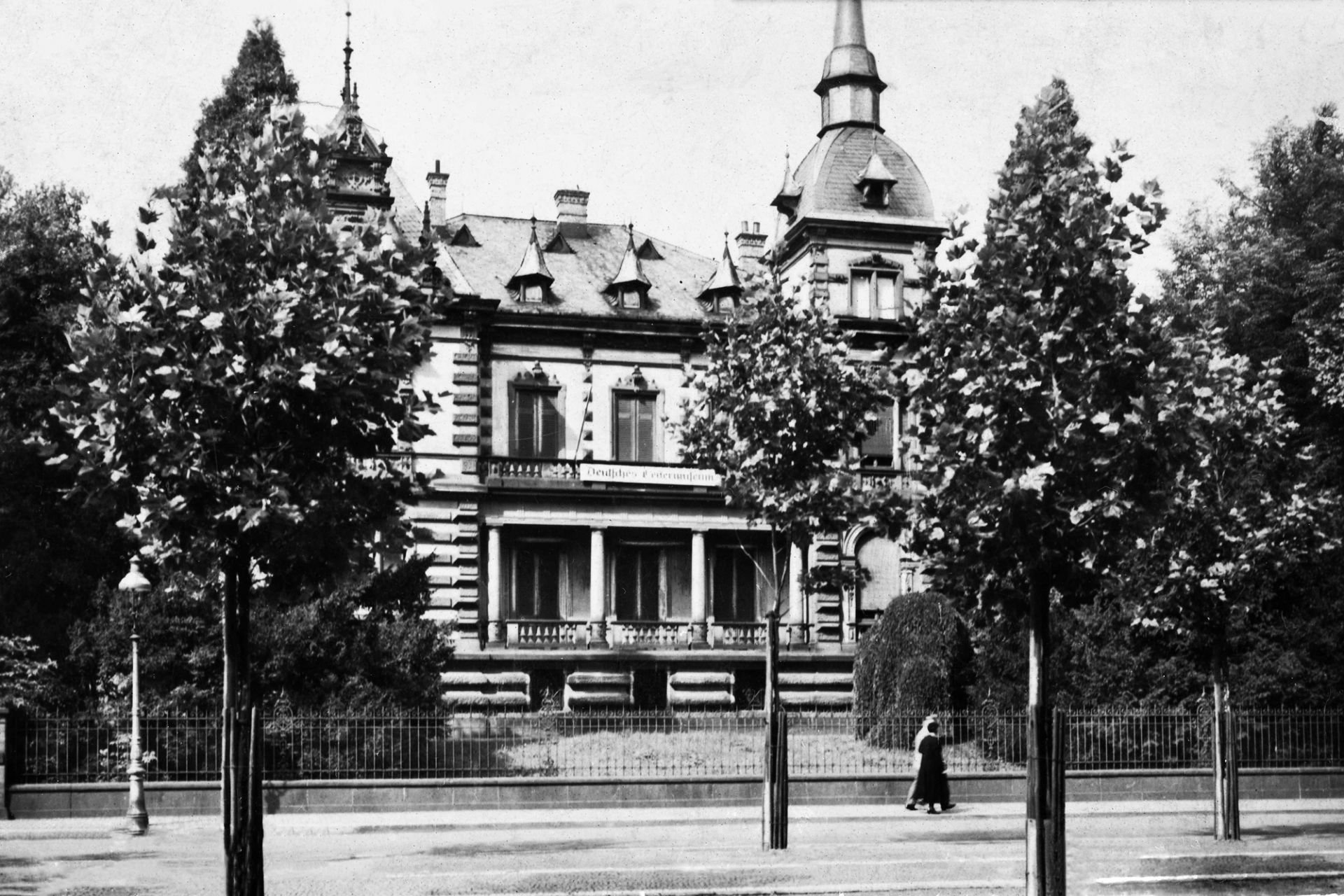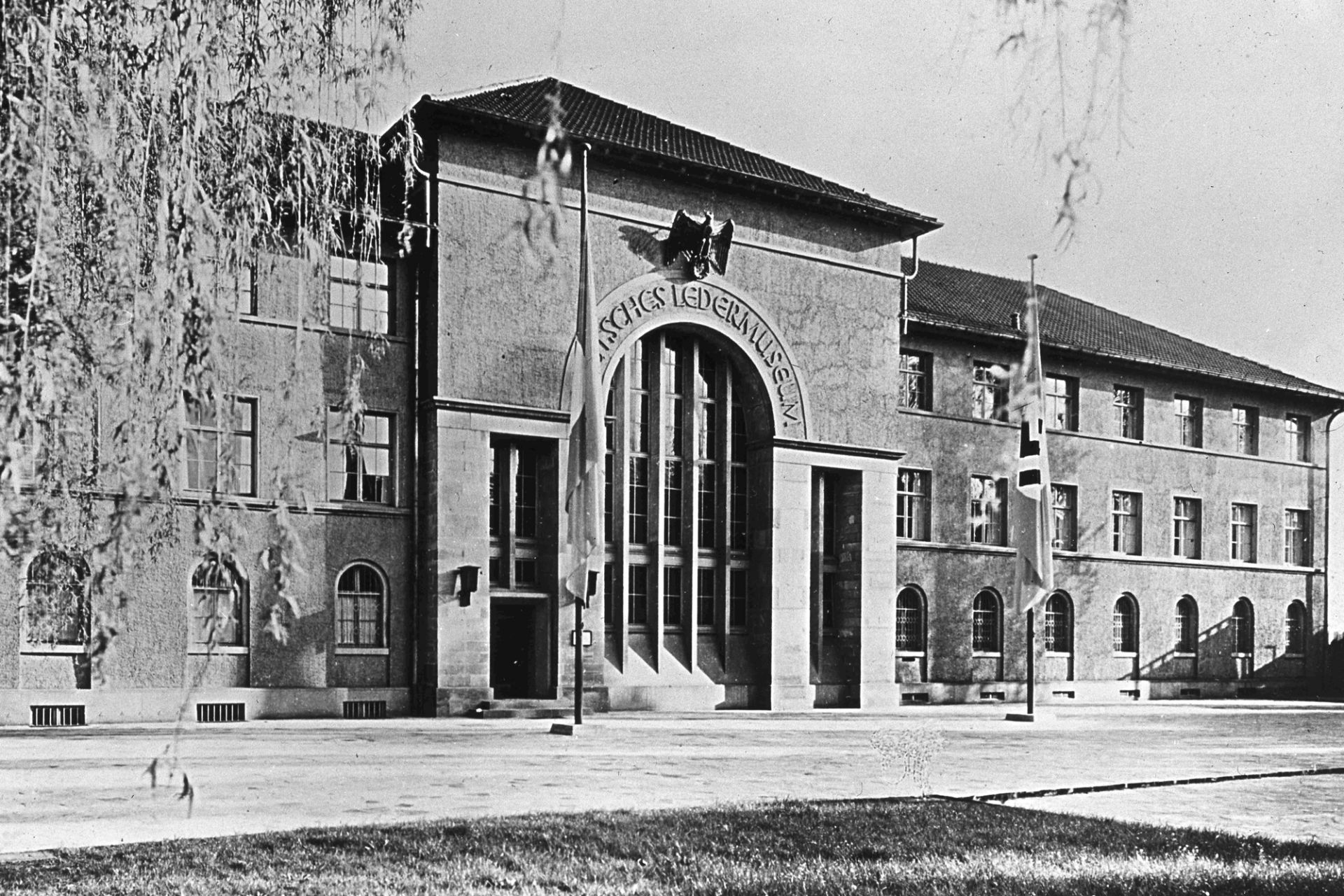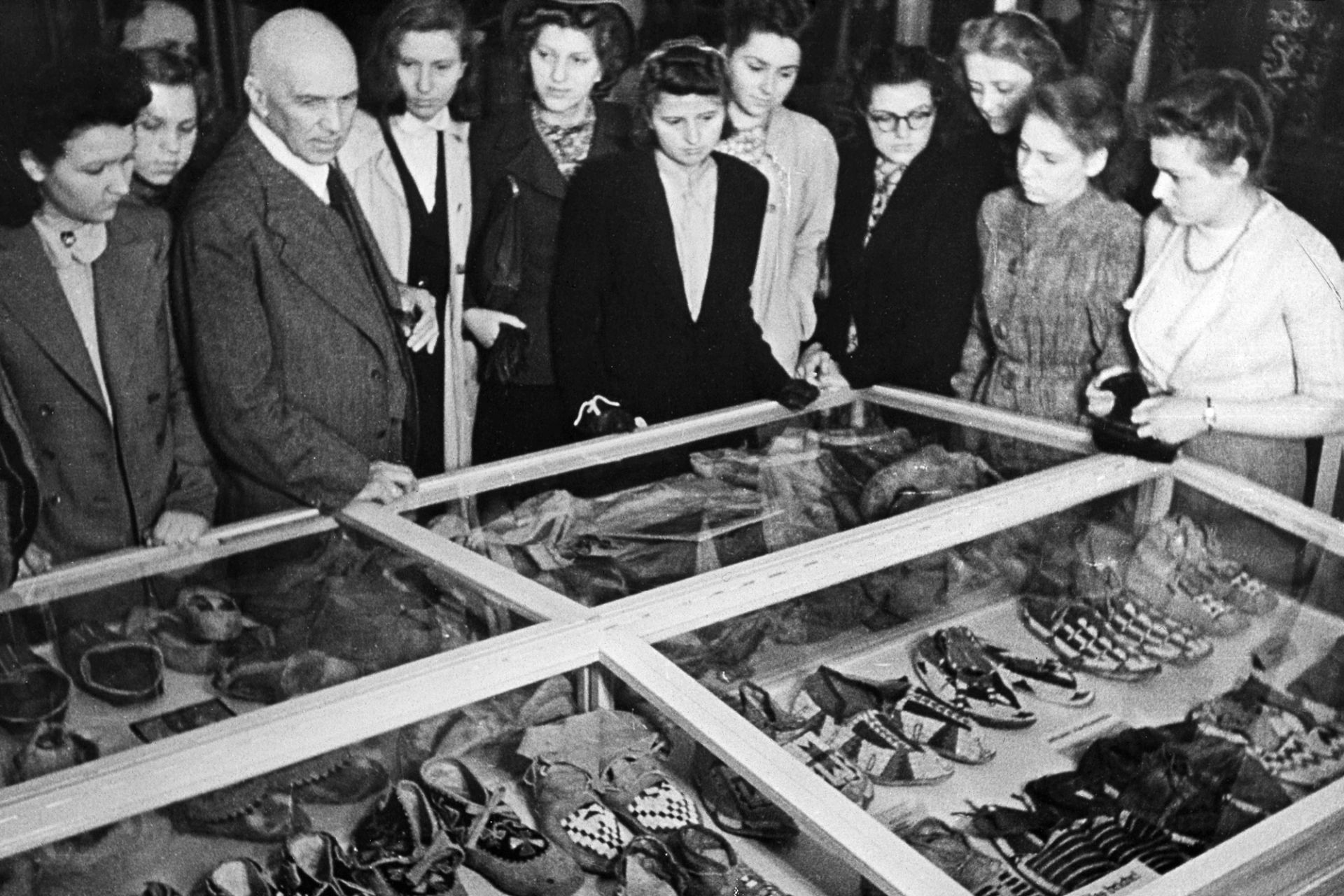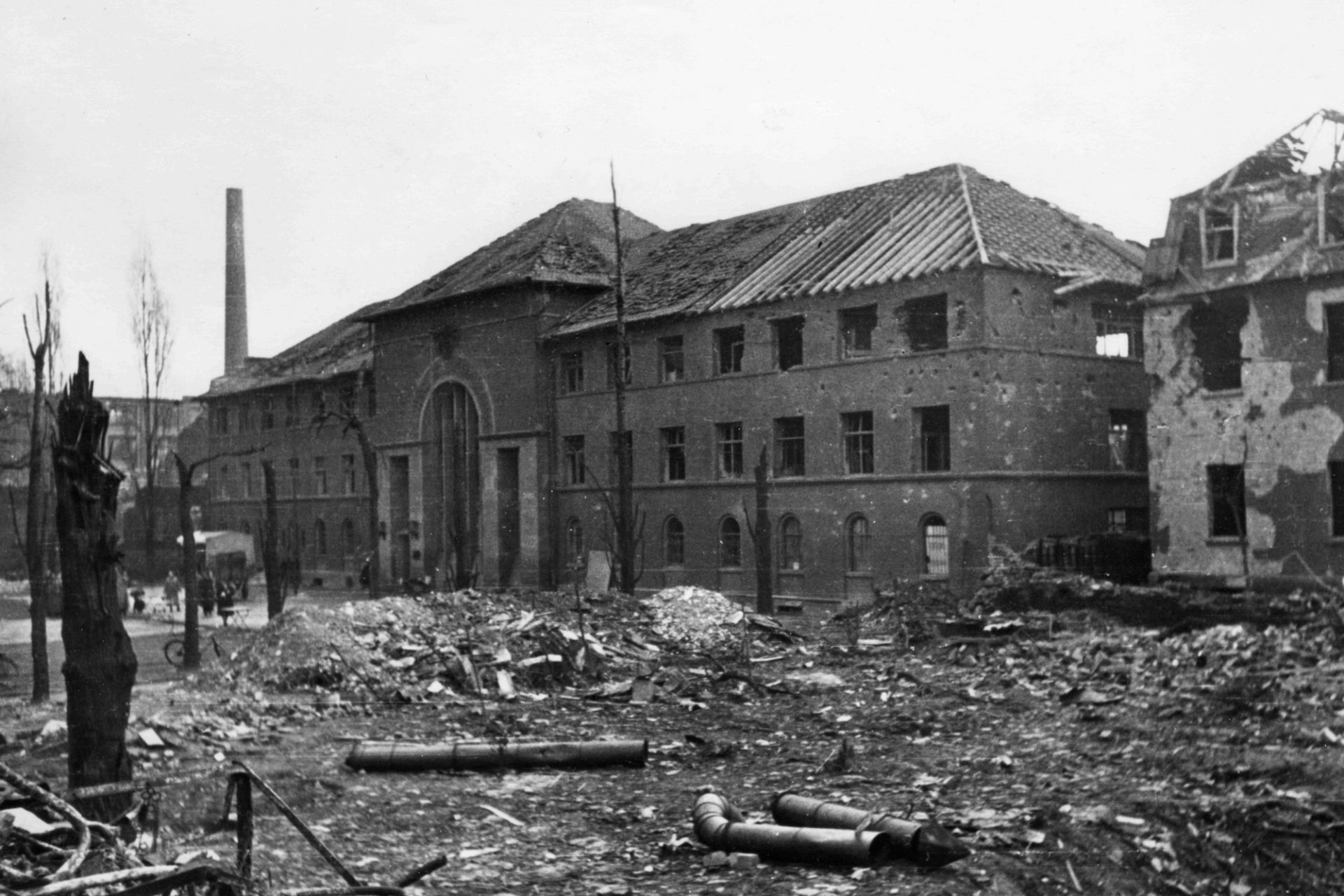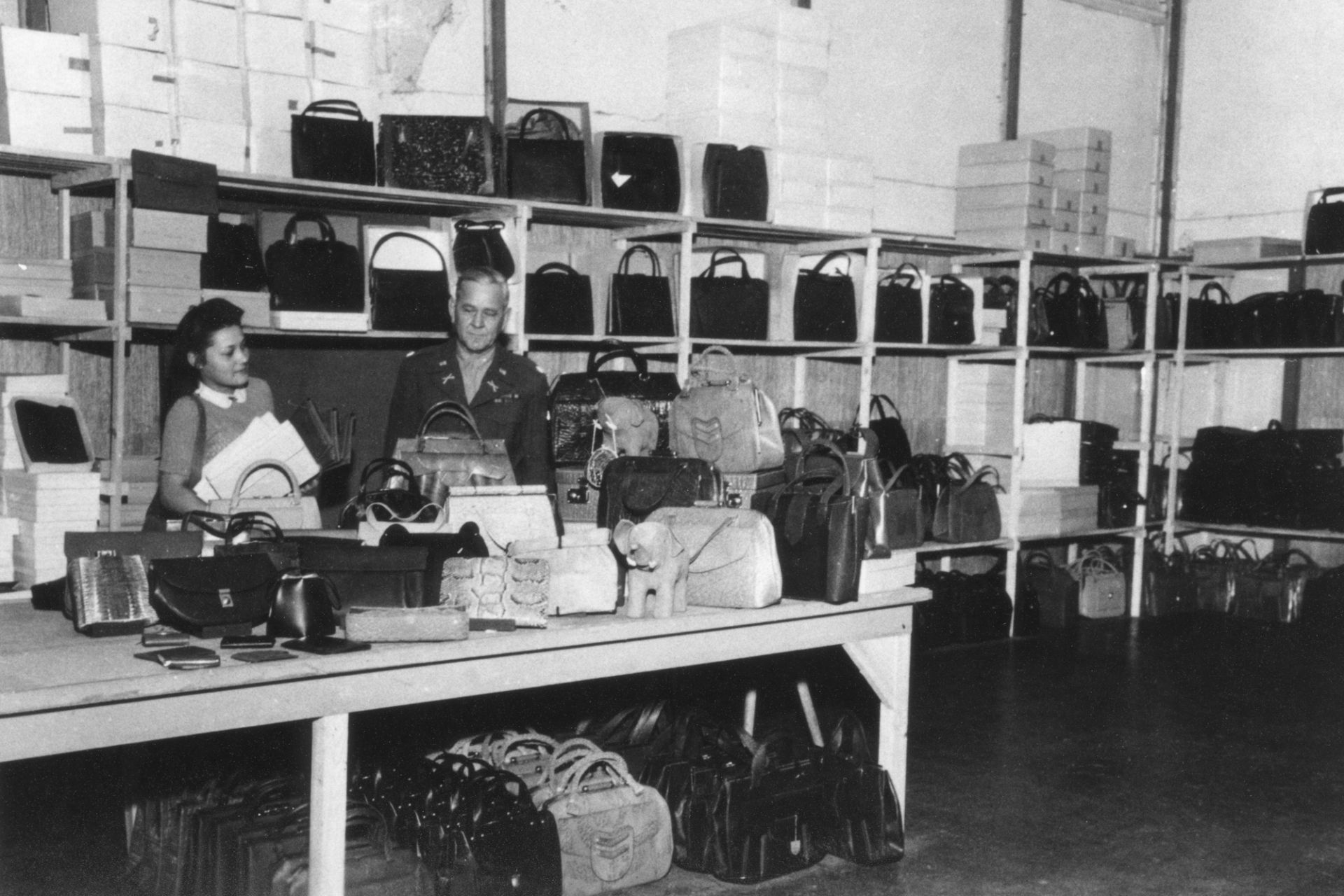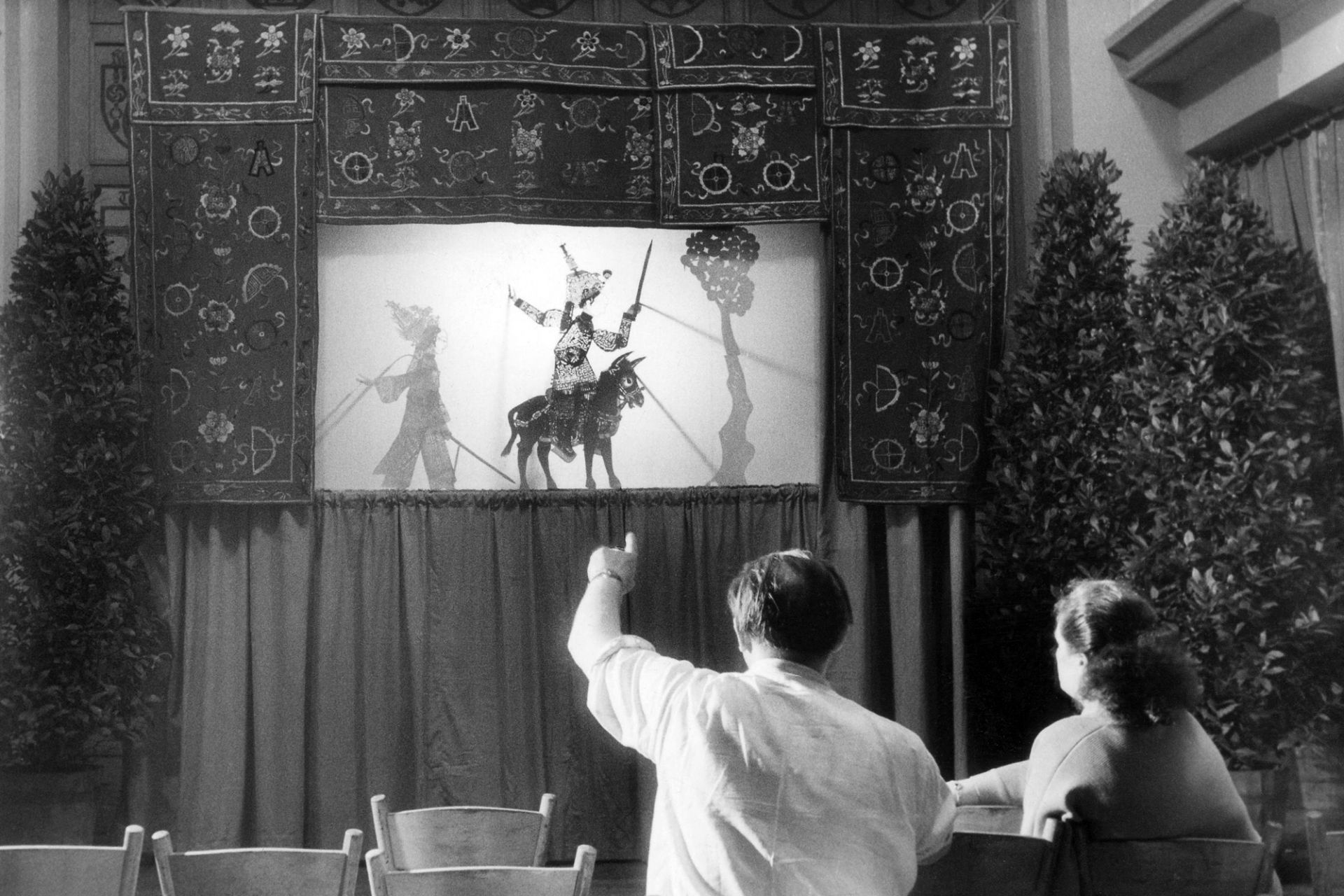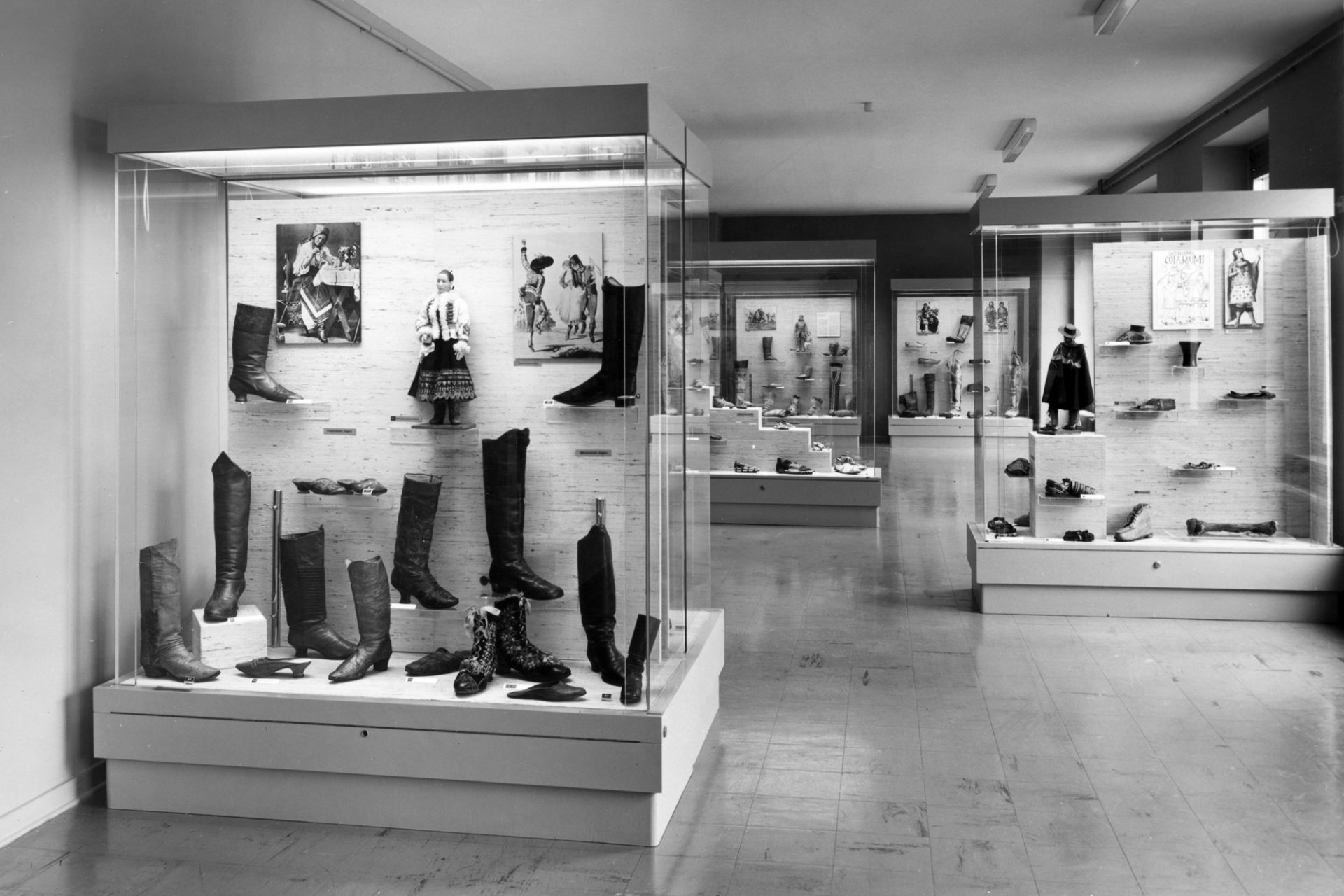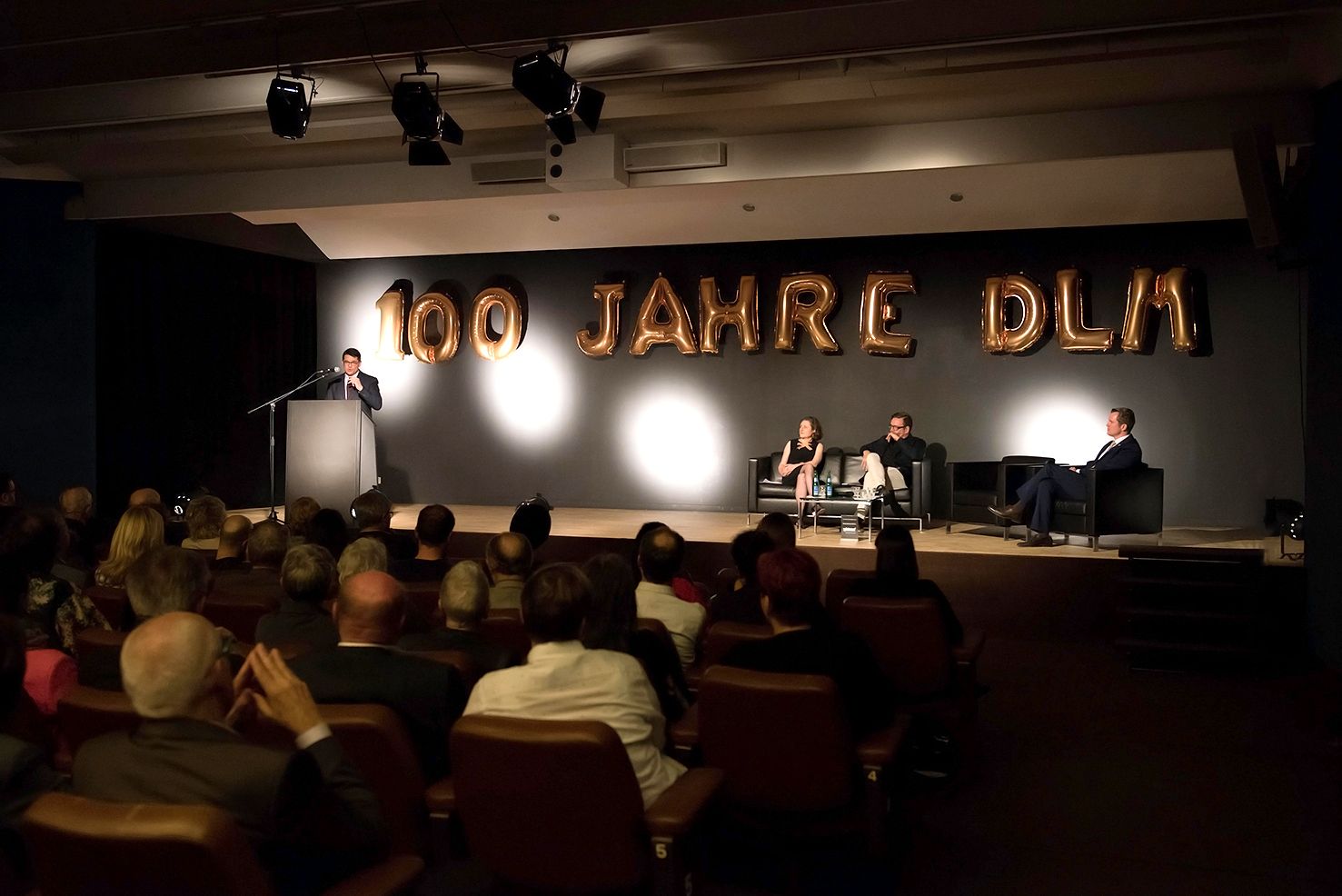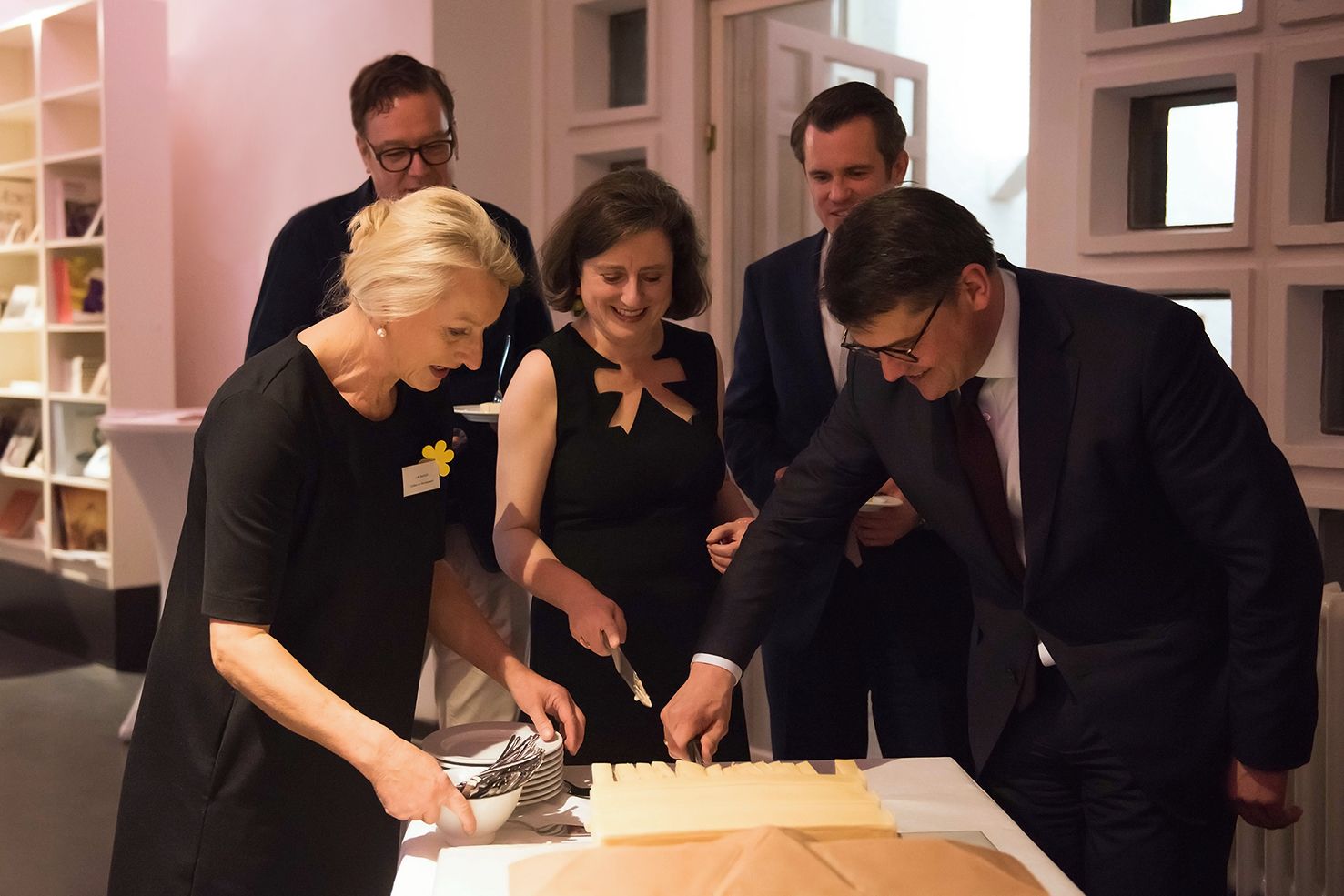History
Establishment and Initial Years at Technische Lehranstalten in Offenbach/Main
Deutsches Ledermuseum, the German Leather Museum, was established in Offenbach by architect Hugo Eberhardt (1874–1959) on March 13, 1917. During its early years, the objective of what was to become the cornerstone of the modern-day museum collection was to develop and refine the good taste of young artisans, designers and leather goods manufacturers at Technische Lehranstalten (now the Offenbach University of Art and Design). The Museum’s founder served as its director from 1907 through 1940.
At the time, Offenbach occupied a preeminent position on the international leather goods market and leather goods from Offenbach were world-famous. Products from the Offenbach region, with their highly-skilled workmanship and contemporary designs, were aimed at continuing to secure the economic success of this sector, with its long-standing tradition.
Leather Goods from Offenbach
The history of the development of the leather goods trade in Offenbach stretches back to the end of the 18th century. This period saw the emergence of the first wallet businesses, which specialized in producing small leather goods such as little leather cases and caskets. In 1776, Joseph Anton Mönch, who was appointed to the Isenburg court as a bookbinder, established, together with his son Johann Karl Mönch, the first Etui- und Souvenirmanufaktur (leather case and souvenir manufactory). Further businesses were to follow and by the end of the century a highly qualified wallet trade had become established in the region. Most of the company founders and their employees came from local leather-processing professions such as the bookbinder’s trade, the fashionable saddlery industry and the strap-making trade.
Over the course of the 19th century, the demand for leather and leather goods grew steadily, resulting in a wide spectrum of products, from leather cases and toiletry bags to luggage, wallets and purses, shoes and photograph albums. By the middle of the century, Offenbach’s leather goods industry had experienced an unprecedented upswing. One of the major factors in this was its favorable manufacturing conditions, for instance, because of homeworkers in the surrounding areas, the attractiveness of the location thanks to the freedom of trade in the city in contrast to its neighbor, Frankfurt/Main, and because of its favorable location in relation to the latter trade-fair city, offering good opportunities for sales and trading.
The structure of the leather goods trade was specifically characterized by small and medium-sized businesses operating in the leathercraft trade. This soon also attracted the leather-producing industry and its ancillary industries to Offenbach. The great diversity of leather producing and processing businesses ranged from tanneries to shoe factories, wallet manufacturers to specialists in leather-pressing and leather-gilding, along with dyeing factories. In no other town or city in the German Empire was so much leather processed as there was in Offenbach/Main.
Offenbach’s leather goods trade reached its zenith in the 1920s. Not least thanks to its high volume of exports, something that accounted for 75 percent of production before World War I, Offenbach’s leather goods became famous throughout the world.
Nowadays, because of structural change and pressure from global competition, the sector has been forced to content itself with a niche existence and only a few companies have survived. The trade lives on in isolated cases, in small regional leather workshops that produce exclusive leather goods, as well as thanks to the fact of designers rediscovering the material.
The Birth of an All-Round Museum Dedicated to the Raw Material that is Leather
Out of what was originally a collection for teaching and exemplary purposes, the collection that was, for its first eight years, housed with the Technische Lehranstalten, soon grew into a broadly-based educational establishment for anybody interested in the subject. The aim was to produce a universal museum dedicated to the raw material that is leather, a museum that not only reflects the global diversity of crafted leather goods that demonstrate great artistic prowess but also shows how animal hides can be preserved, treated and designed – one of the oldest crafts known to man in the world.
In 1922, the German Leather Museum became an 'Anstalt des öffentlichen Rechts' (public-law entity). After a two-year conversion phrase, it moved into Villa Mainpfalz on Kaiserstrasse, which had been made available to the museum for exhibition purposes by the city of Offenbach in 1924.
After participating in the first international leather show in Berlin in 1930, the German Leather Museum became famous throughout the world and its premises in Villa Mainpfalz soon became too small to house its growing inventory – applied art, ethnology and a collection of shoes – and the museum started looking for a new domicile.
In 1938, the museum moved into its present-day location, an old warehouse on Frankfurter Strasse, which had been converted according to plans by Hugo Eberhardt from 1936 through 1938. After the museum had moved out, Villa Mainpfalz was demolished.
At the beginning of the 1940s, the museum’s work very much came to a standstill. In 1942–43, the collection was moved to Amorbach in the Odenwald, to Seligenstadt and Büdingen; the building was severely damaged by air raids and only its basic substance remained standing.
On Hugo Eberhardt
Prof. Hugo Eberhardt established and ran the German Leather Museum on a voluntary basis from 1917 until his death in 1959, with the exception of a four-year interruption between 1946 and 1950.
Recent historical research has now allowed for a new, critical view of Eberhardt’s person and his work. In order to further pursue the interests of the German Leather Museum, and particularly so as to augment its collection and, in the 1930s, to acquire a fixed and more prestigious location, in his double role as Director of Meisterschule des Deutschen Handwerks (formerly Technische Lehranstalten, nowadays HfG Offenbach) and Head of the museum, Eberhardt collaborated with the Nazis while they were in power. In 1941, he became a member of the Nazi Party and actively distanced himself from the museum’s former, Jewish patrons. At a denazification tribunal in April 1948, he was deemed to be a “hanger-on”.
Postwar period - a New Beginning
After the end of World War II, the museum building was occupied by the US Army until November 1950. Then, after conversion work on its interior, it served various purposes. As early as spring 1945, the west wing of the ground floor was set up as a temporary 'Leathergoods Store', selling leather products from Offenbach to soldiers and relatives of the Allied troops. It was possible for the museum to use several rooms for restoring and housing its collection’s inventory. The Dutch and French objects acquired by the museum during the Nazi era were restituted in 1946. The German Leather Museum opened some of its rooms to the public again for the first time after the War on October 4, 1949, to mark the occasion of a sales exhibition: 'Lederwarenindustrie und Marshallplan' (The Leather Goods Industry and the Marshall Plan). The following year, this exhibition was expanded, becoming the Offenbach Leather Goods Trade Fair.
In 1951, the major shoe collection was set up with its own showrooms, known as 'Deutsches Schuhmuseum' (German Shoe Museum). There have been two major conversion projects (1960–61 and 1980–81) which have extended the premises. Subsequent to these projects, the museum had more than 4,000 m² at its disposal; this space was divided up into exhibition space, a large events area, storage rooms, and archives.
On May 23, 1995, an LRT stop at 'Ledermuseum' opened on Berliner Strasse.
The German Leather Museum in the 21st Century
Further expansion and conversion work followed in 2010–11. At the same time, a provenance research facility was established at the German Leather Museum for a period of three years, aimed at investigating objects that had once been in Jewish ownership.
In October 2013, the Julius-Mayer-Portal (Julius Mayer portal), a partial reconstruction of the entrance portal to an Offenbach-based leather factory, Julius Mayer & Sohn, was erected on the museum forecourt, since when it has stood in memory of two families of Jewish entrepreneurs, the Mayer and the von Hirsch families. The corporate building was erected at the beginning of the 20th century after architectural plans by Hugo Eberhardt.
J. Mayer & Sohn was one of the leading European leather manufacturers, particularly famed for its kid glacé leather. Ludo Mayer and his nephew Robert von Hirsch were also patrons of the city of Offenbach and of the German Leather Museum, financing important acquisitions by the museum. Under pressure from the Nazis as a Jewish entrepreneur, the last owner, Robert von Hirsch, was forced to give up the company as early as 1933 and to emigrate to Switzerland.
Since the mid-2010s, the museum has realigned itself in terms of its main focus. Instead of continuing with its existing policy of organizing its exhibits into three sections – applied art, ethnology and the Deutsches Schuhmuseum (German Shoe Museum) – the museum has been focusing on presenting various approaches to its highly diverse collection.
In 2017, the German Leather Museum celebrated its 100th anniversary. Since then, there have been signs positioned along the A3 interstate, guiding tourists to the museum.
